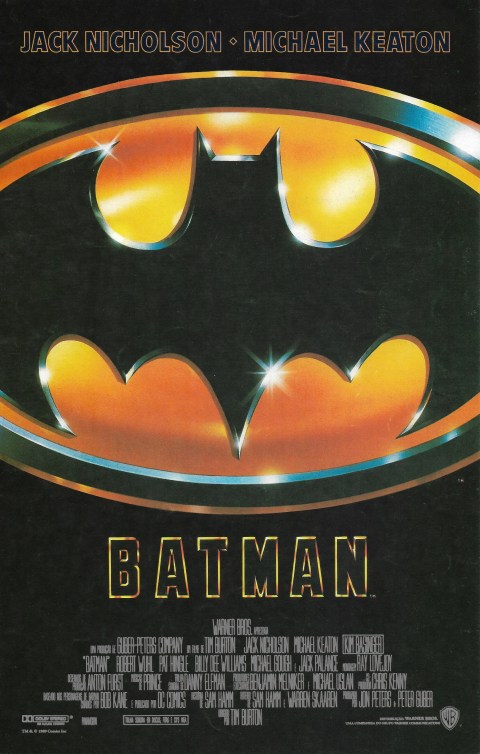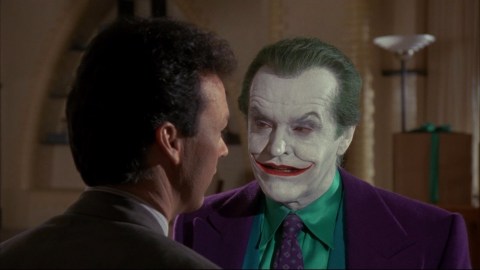17. 4. – 19. 4. 2026
Batman

 Original title: Batman
Original title: BatmanDirector: Tim Burton
Production: 1989, USA / UK
Length: 122 min.
Annotation for KRRR! 2010
The Batman film comes from 1989, a decade when the entire concept of Batman was shaken to its foundations by a groundbreaking pair of works by the then-talented comic book creator Frank Miller – The Dark Knight Returns (1986) and Batman: Year One (1987). Batman was once a cheerful, colorful comic book hero who had positive relations with the police and a suspiciously warm communication with his sidekick Robin. Both of the aforementioned works, on the contrary, presented a dark hero, in the first case a tired man breaking his watch with Superman, in the second a novice stormtrooper in a hostile, corrupt world.
This concept was combined in the late eighties with the macabre aesthetic of the then-original filmmaker Tim Burton. The film is still extremely obscure, and three years later, under the direction of the same creator, an even stranger sequel followed, in which Batman played a rather marginal role alongside a panopticon of other criminals (after all, he says one word in the first half hour and does not appear on screen at all for dozens of minutes). It presents Batman “from the bottom up” – at first it is a myth told by frightened criminals, later reinforced by journalists. The viewer does not see his birth, he discovers it. In addition, explicit motivations for the characters’ actions are introduced into the dark world, which allow them to be psychologically grasped (even though they were never in the comics). The most famous Batman villain, the Joker, is accidentally created by Batman himself when he throws a villainous gangster into a tank of acid, who then vomits and, disfigured, starts to rampage like a mad “clown”. However, the film goes much further, turning the situation around and, on the contrary, connecting the Joker with the creation of Batman. Suddenly, the Joker is not a completely unmotivated anarchist psychopath, but acquires a completely clearly named function for the entire Batman story.
However, there is a strange rule here that the film version of the fictional American city of Gotham copies the personality profile of the main character. The completely stupid feature film from 1966, based on the famous TV series with Adam West, threw the entire Batman myth into a totally self-ironic exaggeration. Burton's film then stylized Gotham (its life and inhabitants) into the cinematic Chicago of the thirties of the last century. The film openly refers to expressionist films, the art deco style, Warner Brothers gangster films and film noir. The Gotham of the first two Batmans is a gray world of muted colors, full of monumental buildings.
Neon signs flicker dimly here and there, fog is omnipresent, piles of garbage are scattered everywhere, gangsters walk around in long coats and hats, huge offices of bosses are always on the upper floors of high-rise buildings and seductive blondes are dressed in long dresses. Sometimes it might seem that Batman tells much more about other films, about film history than about a comic book hero - and the hero is actually much more a hero of noir films of the fifties than a comic book character with a rich past. This also applies to the villain Joker, who actually has little in common with his prototype.
However, none of this can actually be considered a criticism, unless you are a purist who rides on Batman as he was once primarily set by Bob Kane. Burton's image of Batman and Gotham in both films was actually a dead end in a way that could not be developed much further. Both of Miller's comics didn't find many followers, and other revisionist lines were much more progressive, but they helped kick off the aforementioned ones (The Dark Knight Returns, Year One). And if we mercifully ignore the third and fourth Batman films, so we move on to Batman Begins and The Dark Knight, the same can be said about the films.